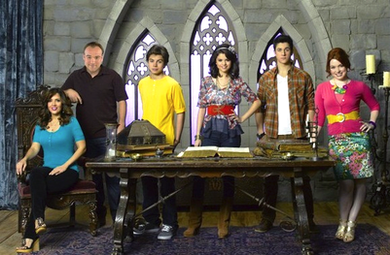There comes a time when it’s too late to tell people how you feel.
There will come a day when the person you mean to talk to won’t be there. Don’t wait for that day.
“There’s always tomorrow” isn’t always true.
The no-pants guide to spending, saving, and thriving in the real world.
I once worked for a company that was so confused that, not only did I not meet my last immediate supervisor for 6 months, but he didn’t know what I did or who I supported. He was my supervisor on paper for payroll and organizational purposes only.

Does your boss know what you do?
More recently, I was called into my current boss’s office to get scolded for low productivity since I don’t produce as much as the other programmers.
That’s not my favorite thing to do in the afternoon. I’d rather spend the afternoon playing Angry Birds improving our software.
In response, I spent the week logging my time. Before I left on Friday, I sent my boss an email that started out with:
When we spoke on Monday, you compared my productivity unfavorably to the other developers. I don’t think that’s a fair comparison as I do more categories of tasks than the others. I don’t think you realize how many additional responsibilities I’ve taken on over the years.
I continued from there with a summary of each day’s work last week. The short version is that, while being productive, I spend less than half of my time on my primary job function because I’ve slowly taken on a managerial role.
I’m on vacation this week, so it will be a few days before I find out if my email will make a difference.
Now, this scolding was my fault. I know I spend my day doing much more than just writing code. I’ve told my boss that before, but I’ve never made sure he understands the scale of the extra work, and I’ve never proven it with a detailed log.
This was poor personal marketing.
In the future, I have to make sure that I keep him in the loop with a summary of the extra work I do, like the training, product demos, sales calls, and estimates I’m involved in.
We’ll see how well that works.
How would you handle a situation like this? Daily emails? Whining? Kicking a garbage can across the room?


I just got an email from INGDirect. To celebrate Independence Day, they are having a sweet, sweet sale.
You can:
Take advantage of all of that and you’ll get $2054 in cash or discounts.
Seriously, this deal rocks. If you don’t have an INGDirect account, get one. There are no overdraft fees and no monthly fees.
The sale ends tomorrow at midnight, so hurry.
Selena Gomez is no longer the innocent yet rebellious Alex from Disney’s hit show Wizards of Waverly Place. In fact, the quirky and wholesome child star who was beloved by so many young women has now become a scantily

clad pop star that is singing risque lyrics to her on again off again pop star boyfriend Justin Beiber. Her transition to adult stardom has not been an easy one, and many believe that her role in “Spring Breakers” is a sign that she has officially entered adulthood and kissed her teen-friendly role preference in the past. But unlike other famous Disney child stars like Lindsey Lohan and Britney Spears, Gomez has had a relatively smooth path to adult stardom with only minor bumps in the road. But many people are asking themselves whether or not child stars can actually make it as adults, or whether their career is over once their cute phase stages.
Child stars are aware of the fact that they are always being watched. They become the idols of their young fans, and these young idols rely a lot on their cuteness to become a celebrity. But transitioning from a cute kid to a talented adult actor can be a difficult feat. Not only does the star have to earn a new fan base, they also must find a new identity and decide which types of roles they are willing to take now that they are a mature adult able to make their own decisions. Sometimes, even children who do not fall into the drug and alcohol trap, find it difficult when they are given control of their own careers without their guardian’s rules.
The Public is Less Receptive to a Child Star Turned Adult Star
Die hard Wizards of Waverly Place will always see Selena Gomez as the lovable yet comedic Alex Russo. While this was her most popular role, it is the role that will makes her transition into more mature roles difficult. The public is less receptive to an adult Selena Gomez, clad in bra tops and short shorts, because they do not realize that she has matured. When the public shuns a child star for taking on more adult roles, the star simply is not sought after for movies and sitcoms. Young female child stars tend to be judged much more than their male counterparts. In fact, Justin Timberlake and Ryan Gosling are both very successful in the acting scene, and they were both Mouseketeers.
It is possible for a child star to make it as a adult, but the person must have thick skin and be prepared for a publicly criticized transition. Many child stars simply choose to retire once they have outgrown the ability to take on youthful roles, and others are not mentally prepared for the scrutiny they will face. Ultimately, a child star can have a successful career in stardom as an adult if the public is ready for the transition.

In AMC’s “Breaking Bad,” Walter White plays the role of chemistry teacher turned meth producer and drug kingpin. While it certainly makes for good television to think about the profits available to someone willing to trade in illegal drugs, the mountain of money that Walter makes by the end of the series is actually not that unrealistic. Meth has a street value that approaches $30,000 dollars per pound. Not only that, but Walter displays a deceptively keen business acumen, especially for a chemistry teacher. A number of keen decisions allowed Walter White to become as successful as he has.
As any business owner knows, merchandise costs are a major portion of any operating budget. Mr. White keeps his profit margins robust in a number of ways. The first of these is by managing his production costs. When he started out in the business, Walter simply stole the majority of the required chemicals from the high school where he worked. This allowed for the product to be sold at a substantial profit when compared to producers who are required to invest more upfront.
On top of his discounted production, Walter was able to stay ahead of the competition both literally and figuratively by utilizing his RV for production. Typically, meth is produced in a laboratory environment, which requires a building. This adds an additional cost of rent to the typical business profile. Walter, on the other hand, produced out of his RV in the early stages of his business’ growth, further increasing his profit margin.
On the production side of the economy, a major consideration is distribution costs. While most of Walter’s competition used pricey, established lines of distribution for their products, he cut out the middle man by distributing his product with his team. This caused major disruptions to his business when his competitors tried to kill him. However, while he was able to accomplish this model, Walter was the beneficiary of increased profits. Then, when he killed his competition, he was able to return to the healthy margin he enjoyed previously.
Many new products are launched with a full blown media campaign. This is a costly proposition. Walter, instead, relied on the quality of his product to speak for itself. This competitive advantage reduced the need for an extensive advertising budget. Furthermore, after a period of time, his product became a preferred choice by consumers everywhere. While he was required to distribute a few loss leaders at times, Walter kept the advertising costs down and profited greatly.
So, while it may seem like Walter White was simply a chemistry teacher who got lucky, it’s clear that he actually had a specific plan for his upstart business. By following a few standard economic principles, he was able to increase his margins at the crucial beginning phase of his business, and had established himself as a leader in the market when he chose to expand